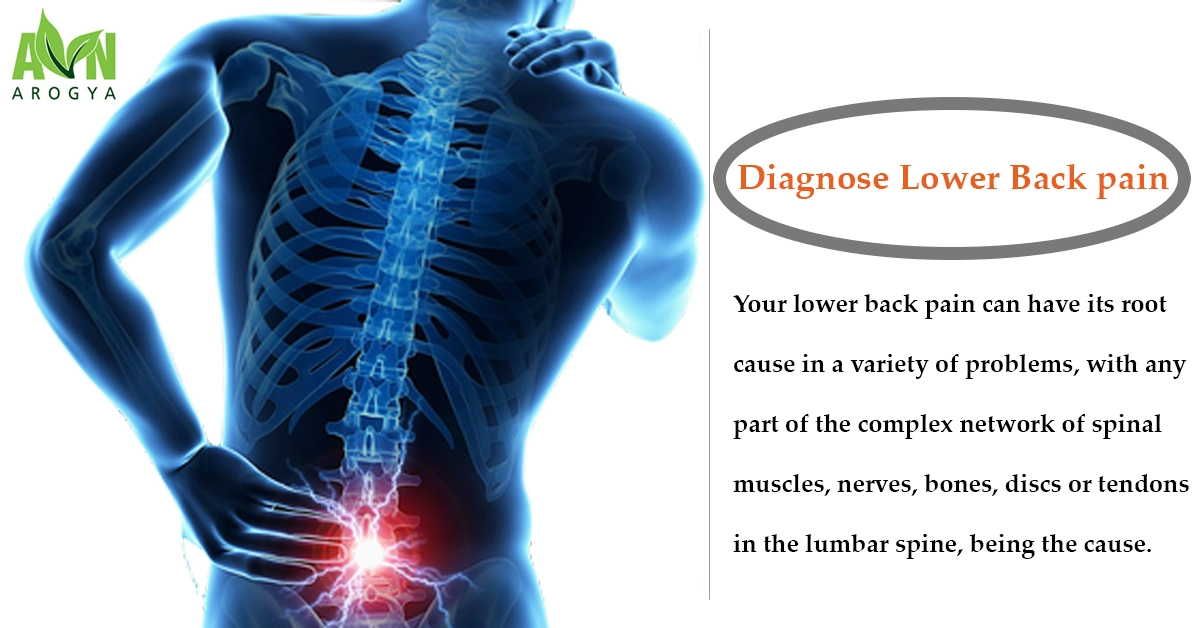
Your lower back pain can have its root cause in a variety of problems, with any part of the complex network of spinal muscles, nerves, bones, discs or tendons in the lumbar spine, being the cause. Diagnosing lower back pain and typical reasons for low back pain include:
Lower back issues can also cause back muscle spasms, which can be the cause of severe pain and disability.
For the initial diagnosis of lower back pain, Doctors will ask you to describe the location, severity and type of pain, in addition to the history of the pain – when you started to feel it, and any activities or positions that make the pain better or worse. The basic analysis based on your history will help your Doctor categorize the lower back pain. It’s really important diagnosing lower back pain and classify the pain so that the right treatment plan can be started. Back pain could be due to any of the following:
Axial low back pain – This is the most common type of back pain and is confined to the lower back and does not travel into the buttocks or legs. You can feel the pain either sharply or as a dull one. It can be severe enough to limit everyday activities, such as standing and walking. It generally worsens with strenuous activities, such as sports or certain physical positions, such as sitting for long periods. You can find relief by rest. Most low axial back pain is short-lived and heals within 6 to 12 weeks. At times there are chances that it can last longer and become chronic.
Lumbar radiculopathy (sciatica) – This is the second most common type of lower back pain and is caused by compression of the nerve roots of the sciatic nerve. The sciatic nerve is the largest single nerve in your body that runs from each side of your lower spine through deep in the buttock into the back of the thigh and all the way down to your foot. It serves a vital role in connecting the spinal cord with the leg and foot muscles. This pain is more severe in the leg than in the back. Symptoms are pain, numbness or weakness that is felt in your lower back, and on only on one side of the lower body, affecting the buttock, leg, foot, or the entire length of the leg.
Low back pain with referred pain – This is pain in the lower back that also radiates to your groin, buttock and upper thigh, but rarely below the knee. You will feel the pain as dull and achy with varying intensities. This back pain is similar to axial pain and is managed with similar treatments.
A specialist in back and spine will have a good idea of the cause of your pain from the symptoms and physical examination. But when pain is severe even after 6 to 12 weeks of conservative treatment like rest, Oil application, warmth, pain killers etc. additional diagnosis might become necessary to identify the cause of the back pain.
Some of the tools used for diagnosing lower back pain:
But please also understand that at times low back pain actually has no identifiable anatomical cause, but this doesn’t mean that the pain doesn’t exist. Even with no clear cause of pain, your pain is still real and should be treated.